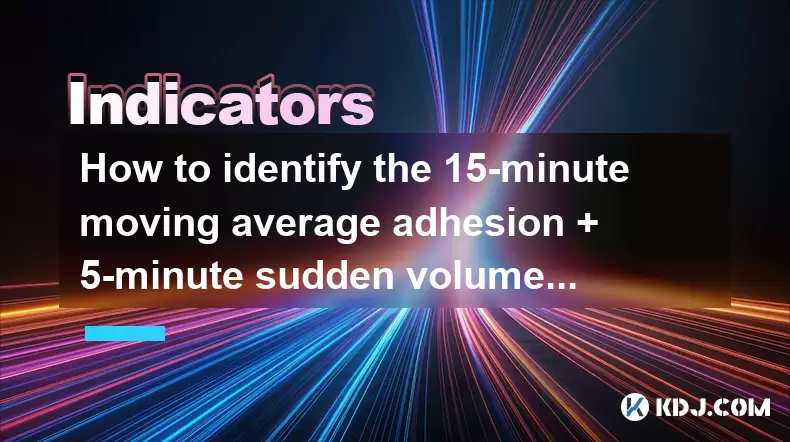-
 Bitcoin
Bitcoin $118000
0.67% -
 Ethereum
Ethereum $3750
0.71% -
 XRP
XRP $3.183
1.61% -
 Tether USDt
Tether USDt $1.000
-0.01% -
 BNB
BNB $788.1
1.21% -
 Solana
Solana $186.0
0.85% -
 USDC
USDC $0.9999
-0.02% -
 Dogecoin
Dogecoin $0.2373
1.25% -
 TRON
TRON $0.3204
1.76% -
 Cardano
Cardano $0.8266
1.85% -
 Hyperliquid
Hyperliquid $44.04
1.28% -
 Sui
Sui $4.192
5.88% -
 Stellar
Stellar $0.4399
2.63% -
 Chainlink
Chainlink $18.40
1.19% -
 Hedera
Hedera $0.2842
9.06% -
 Bitcoin Cash
Bitcoin Cash $560.5
2.46% -
 Avalanche
Avalanche $24.99
4.58% -
 Litecoin
Litecoin $114.5
1.25% -
 UNUS SED LEO
UNUS SED LEO $8.980
-0.03% -
 Shiba Inu
Shiba Inu $0.00001406
0.53% -
 Toncoin
Toncoin $3.306
4.27% -
 Ethena USDe
Ethena USDe $1.001
0.03% -
 Polkadot
Polkadot $4.169
2.37% -
 Uniswap
Uniswap $10.56
1.95% -
 Monero
Monero $322.8
1.06% -
 Dai
Dai $0.0000
0.00% -
 Bitget Token
Bitget Token $4.545
0.12% -
 Pepe
Pepe $0.00001261
1.29% -
 Aave
Aave $296.5
1.27% -
 Cronos
Cronos $0.1379
5.90%
How to identify the 15-minute moving average adhesion + 5-minute sudden volume change breakthrough signal?
The 15-minute MA adhesion signals consolidation; when paired with a 5-minute volume spike and breakout, it offers a high-probability trade entry.
Jul 27, 2025 at 09:57 am

Understanding the 15-Minute Moving Average Adhesion Pattern
The 15-minute moving average adhesion refers to a price behavior where the cryptocurrency's candlesticks closely follow the 15-minute moving average (MA), typically the simple moving average (SMA) or exponential moving average (EMA), over a sustained period. This adhesion suggests a consolidation phase where neither buyers nor sellers are in control. During this phase, price oscillates tightly around the MA line, forming a horizontal or slightly sloping channel. This behavior is commonly observed before a significant breakout, especially in low-volatility environments.
To identify this adhesion, traders should set up a 15-minute chart on their preferred trading platform (such as TradingView, Binance, or Bybit) and apply a 20-period moving average. The number 20 is standard, though some traders use 50 or 100 depending on strategy. The key visual cue is that candle wicks and bodies remain close to the MA line, rarely deviating more than 1% above or below. This tight clustering indicates market indecision and often precedes a directional move.
It is critical to distinguish adhesion from a strong trend. In a trend, price may ride the MA but will typically stay on one side (above in an uptrend, below in a downtrend). Adhesion, however, is characterized by frequent crossovers of the MA in both directions. This lateral movement reflects balance between supply and demand.
Monitoring the 5-Minute Chart for Sudden Volume Spikes
While the 15-minute chart shows structural adhesion, the 5-minute chart is used to detect short-term volume anomalies that may signal a breakout. Volume is a leading indicator of momentum, and sudden increases often precede price movements. To detect a volume breakthrough, traders must first establish a baseline for normal volume.
On the 5-minute chart, apply a volume indicator and observe the average volume bars over the past 30 to 50 candles. A sudden volume change is defined as a single candle or a cluster of two to three candles exhibiting volume at least 2 to 3 times higher than the recent average. For example, if average volume is 100 BTC per 5-minute candle, a spike to 250–300 BTC would qualify as significant.
This volume surge must coincide with a price breakout candle—a candle that closes decisively above or below the recent consolidation range. The breakout candle should have a long body, minimal wicks, and ideally close near its high (for bullish) or low (for bearish). The combination of high volume and strong price movement increases the probability that the breakout is genuine and not a false signal.
Aligning the 15-Minute Adhesion with 5-Minute Volume Breakthrough
The signal becomes actionable only when both conditions are met simultaneously. First, the 15-minute chart must show clear adhesion to the moving average, indicating consolidation. Second, on the 5-minute chart, a volume spike must occur alongside a breakout candle that breaks the consolidation boundary.
To align these signals, follow these steps:
- Ensure the 15-minute price has been within ±1% of the MA for at least 6 consecutive candles.
- Switch to the 5-minute chart and confirm the price is near a key support or resistance level formed during the adhesion phase.
- Watch for a volume bar that exceeds 200% of the 20-candle average.
- Confirm the breakout candle closes outside the recent range with strong momentum.
- Verify that the breakout direction aligns with the overall trend on the 1-hour or 4-hour chart to avoid counter-trend traps.
This confluence increases the signal’s reliability. For instance, if the 15-minute adhesion occurs in an uptrend, a bullish volume breakout on the 5-minute chart is more likely to succeed.
Setting Up Alerts and Indicators for Real-Time Detection
To catch this signal in real time, traders should configure alerts and optimize their chart setup. Begin by opening two panels: one with the 15-minute chart and another with the 5-minute chart. On the 15-minute chart, apply a 20-period EMA and adjust the color to bright green for visibility. Enable a price deviation alert when price moves more than 1% away from the EMA.
On the 5-minute chart, add a volume oscillator or use the default volume bars. Create a custom alert that triggers when volume exceeds 200% of the 20-period average. Most platforms allow setting alerts using script conditions. For example, in TradingView’s Pine Script, use:
volume_spike = volume > 2 * sma(volume, 20)
alertcondition(volume_spike, title="Volume Breakout", message="5-minute volume spike detected")Additionally, use horizontal lines to mark the upper and lower bounds of the consolidation zone on the 5-minute chart. Set price alerts when these levels are breached. Combining volume and price alerts ensures prompt notification when both criteria are met.
Executing the Trade Based on the Signal
Once the signal is confirmed, execution must be precise. The entry point is the close of the breakout candle on the 5-minute chart. For example, if a bullish candle closes above resistance with high volume, enter a long position at that close price.
Use a limit order slightly above the breakout level to ensure execution if price retests. For risk management, place a stop-loss just below the recent consolidation zone or below the 15-minute MA if the adhesion was above it. Take-profit levels can be set using a 1:2 or 1:3 risk-reward ratio, or at the next technical resistance.
Position size should reflect account risk—never risk more than 1–2% per trade. For example, if the stop-loss distance is 0.5%, allocate 2% of capital to allow for a 4x buffer.
Frequently Asked Questions
What is the ideal moving average period for the 15-minute adhesion?
The 20-period EMA is most commonly used because it reacts faster to price changes than the SMA, offering earlier signals. However, some traders prefer the 50-period SMA for smoother filtering in volatile markets. The choice depends on the asset’s volatility and the trader’s time horizon.
Can this signal work on all cryptocurrencies?
Yes, but effectiveness varies. Major pairs like BTC/USDT or ETH/USDT with high liquidity and consistent volume respond better to this signal. Low-cap altcoins with erratic volume may generate false breakouts, so caution is advised.
How do I differentiate a real volume spike from a market manipulation pump?
Check the candle structure—real breakouts have strong closes and sustained follow-through. Manipulation often shows long wicks, quick reversals, and volume fading after the spike. Also, verify if the breakout aligns with broader market trends or news.
Should I use this signal in ranging or trending markets?
The signal works best in transitional phases—when a ranging market begins to trend. In strong trending markets, adhesion may not form clearly. In choppy ranges, volume spikes may lack follow-through. Use higher timeframes to confirm context.
Disclaimer:info@kdj.com
The information provided is not trading advice. kdj.com does not assume any responsibility for any investments made based on the information provided in this article. Cryptocurrencies are highly volatile and it is highly recommended that you invest with caution after thorough research!
If you believe that the content used on this website infringes your copyright, please contact us immediately (info@kdj.com) and we will delete it promptly.
- Meme Coins in July 2025: Bitcoin Takes a Backseat?
- 2025-07-27 10:30:12
- HIFI Price Eyes Breakout: Downtrend Line in the Crosshairs?
- 2025-07-27 10:30:12
- Troller Cat's Meme Economy Prowess: Presale ROI and Viral Domination
- 2025-07-27 10:50:12
- Bitcoin Price Tumble: Chart Patterns Point Downward?
- 2025-07-27 10:50:12
- Ethereum's Bullish Case: Flag Pattern Points to $4,800?
- 2025-07-27 11:10:18
- Ethena (ENA) & Anchorage Digital: A Genius Partnership Sparking a Stablecoin Revolution
- 2025-07-27 11:10:18
Related knowledge

What signal does the ROC send when it rises rapidly from a low level and breaks through the zero axis?
Jul 27,2025 at 10:15am
Understanding the Rate of Change (ROC) IndicatorThe Rate of Change (ROC) is a momentum-based oscillator used in technical analysis to measure the perc...

What does it mean that the rebound is blocked after the moving average is arranged in a short position for the first time?
Jul 26,2025 at 10:51am
Understanding the Short-Term Moving Average ConfigurationWhen traders refer to a 'short position arrangement' in moving averages, they are describing ...

What does it mean that the parabolic indicator and the price break through the previous high at the same time?
Jul 26,2025 at 07:22pm
Understanding the Parabolic Indicator (SAR)The Parabolic SAR (Stop and Reverse) is a technical analysis tool developed by J. Welles Wilder to identify...

What does it mean that the price falls below the short-term moving average after the RSI top divergence?
Jul 26,2025 at 11:01pm
Understanding RSI Top Divergence in Cryptocurrency TradingThe Relative Strength Index (RSI) is a momentum oscillator widely used in cryptocurrency tra...

What does it mean when the moving average is arranged in a bullish pattern but the MACD bar is shortened?
Jul 27,2025 at 06:07am
Understanding the Bullish Moving Average PatternWhen traders observe a bullish moving average pattern, they typically refer to a configuration where s...

What does it mean when the price rises along the 5-day moving average for five consecutive days?
Jul 26,2025 at 08:07am
Understanding the 5-Day Moving Average in Cryptocurrency TradingThe 5-day moving average (5DMA) is a widely used technical indicator in cryptocurrency...

What signal does the ROC send when it rises rapidly from a low level and breaks through the zero axis?
Jul 27,2025 at 10:15am
Understanding the Rate of Change (ROC) IndicatorThe Rate of Change (ROC) is a momentum-based oscillator used in technical analysis to measure the perc...

What does it mean that the rebound is blocked after the moving average is arranged in a short position for the first time?
Jul 26,2025 at 10:51am
Understanding the Short-Term Moving Average ConfigurationWhen traders refer to a 'short position arrangement' in moving averages, they are describing ...

What does it mean that the parabolic indicator and the price break through the previous high at the same time?
Jul 26,2025 at 07:22pm
Understanding the Parabolic Indicator (SAR)The Parabolic SAR (Stop and Reverse) is a technical analysis tool developed by J. Welles Wilder to identify...

What does it mean that the price falls below the short-term moving average after the RSI top divergence?
Jul 26,2025 at 11:01pm
Understanding RSI Top Divergence in Cryptocurrency TradingThe Relative Strength Index (RSI) is a momentum oscillator widely used in cryptocurrency tra...

What does it mean when the moving average is arranged in a bullish pattern but the MACD bar is shortened?
Jul 27,2025 at 06:07am
Understanding the Bullish Moving Average PatternWhen traders observe a bullish moving average pattern, they typically refer to a configuration where s...

What does it mean when the price rises along the 5-day moving average for five consecutive days?
Jul 26,2025 at 08:07am
Understanding the 5-Day Moving Average in Cryptocurrency TradingThe 5-day moving average (5DMA) is a widely used technical indicator in cryptocurrency...
See all articles

























































































